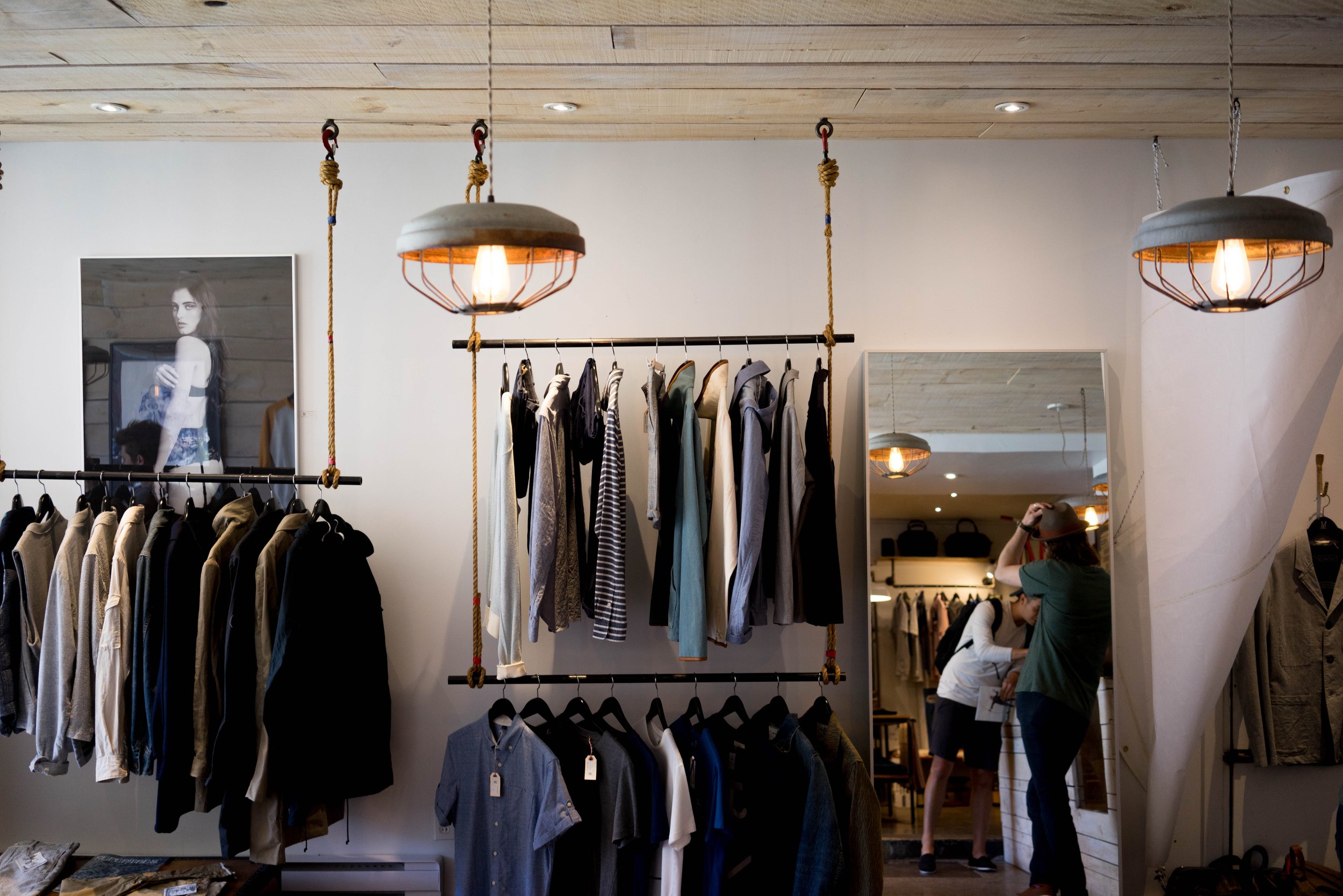Raise Your Wardrobe with Stunning Boutique Fashion Basics
Raise Your Wardrobe with Stunning Boutique Fashion Basics
Blog Article
Discovering the Evolution and Impact of Clothes on Modern Fashion Trends
The development of apparel has dramatically affected contemporary fashion patterns, combining historic criteria with sophisticated technologies. Famous numbers like Coco Chanel and Yves Saint Laurent transformed the style market by presenting concepts that focus on comfort and ease of access, which continue to reverberate today.
Historic Style Influencers
In the tapestry of fashion background, certain numbers have left an indelible mark, forming the patterns and designs that specify whole periods. Coco Chanel, a revolutionary developer, redefined ladies's style by presenting comfortable, elegant clothes that departed from restrictive bodices. Her legendary Chanel fit and little black dress have actually ended up being classic staples in closets worldwide. Christian Dior's post-war "New Look" in 1947, with its party of womanhood via complete skirts and cinched waists, marked a return to opulence and has proceeded to affect designers.
Elsa Schiaparelli is an additional crucial number, renowned for her avant-garde layouts that included surrealist art, collaborating with Salvador Dalí to produce wayward items that challenged standard visual appeals. Her innovative use color and bold patterns reverberates in modern style. Yves Saint Laurent, on the other hand, democratized haute couture with prêt-à-porter collections, bringing runway styles to the masses and setting a precedent for modern-day ready-to-wear lines.
These enthusiasts, among others, not only changed fashion in their times yet additionally set withstanding patterns that reverberate in today's fashion business, offering a foundation whereupon contemporary developers continue to build and introduce. Their traditions emphasize the significance of creative thinking and bold in style's ever-evolving story.
Technological Advancements in vogue
In the middle of the vibrant landscape of the apparel industry, technological advancements stand at the leading edge of technology, reshaping exactly how developers create and customers involve with fashion. The assimilation of 3D printing has changed style processes, allowing designers to try out complicated structures and sustainable materials that were previously impossible. This modern technology helps with quick prototyping, lowering waste and speeding up manufacturing times.

Smart fabrics, installing technology right into textiles, are likewise changing the market. Innovations like temperature-regulating and self-cleaning fabrics offer enhanced capability and comfort. Wearable technology, including functions like physical fitness monitoring and interaction, adds a new dimension to fashion, combining appearances with functionality.
Social Changes and Design
As technical advancements proceed to improve the fashion business, social changes are just as prominent, redefining style and consumer preferences. Recently, the increase of social networks platforms has sped up the dissemination of international style fads, enabling varied social influences to coexist and assemble. This electronic click to read more interconnectivity has actually facilitated the quick exchange of ideas, causing a much more diverse and comprehensive analysis of style that reflects the complex nature of contemporary society.
Cultural awareness and appreciation have motivated designers to attract inspiration from a broader range of ethnic and historical contexts, incorporating typical motifs with modern looks. This combination has actually caused style that resonates with a wider target market, advertising a sense of identity and belonging throughout various demographics. Furthermore, the enhancing demand for personalization has driven brand names to provide personalized choices, enabling customers to reveal originality while reflecting their social heritage.
Moreover, moving societal worths have influenced style, with inclusivity and diversity ending up being central themes. The sector has actually begun to welcome designs and influencers of numerous type of body, ethnic backgrounds, and sex identifications, tough traditional appeal requirements. This change emphasizes the power of social changes in forming the future of style, as style comes to be a more authentic expression of personal and collective identification.
Sustainability and Modern Design
While the garment industry proceeds to evolve, the necessary for sustainability has actually ended up being significantly urgent, influencing modern style practices. This change intends to resolve ecological concerns and moral factors to consider, causing a reevaluation of traditional manufacturing methods. Developers are currently integrating lasting products, such as natural cotton, recycled polyester, and biodegradable fabrics, right into their collections, lowering the environmental impact of fashion. The rise of slow style, which highlights top quality over amount, encourages customers to purchase ageless items instead of short-term fads.
In addition, modern-day layout is characterized by its advancement in decreasing waste and promoting circularity. This strategy not only alleviates environmental effect however also improves the social responsibility of style houses.

Future Trends in Style

Sustainability will certainly proceed to be a driving force in forming future style fads. The industry is significantly adopting environmentally friendly products and ethical production methods, replying to an expanding consumer demand for liable techniques. Technologies such as bio-fabricated materials and closed-loop recycling systems are set to redefine exactly how apparel is created and eaten, lowering environmental effect while maintaining style and quality.
Cultural shifts, consisting of the increase of inclusivity and diversity, will certainly additionally play a critical duty. As society comes to be more mindful of social problems, style is expected to come to be try this site a platform for expression and change. Developers will likely concentrate on producing collections that mirror a broader series of identifications and experiences, promoting representation and availability.
Conclusion
The development of clothes significantly influences modern fashion fads, where historic influences combine with modern styles. This ongoing evolution highlights style's function as a mirror to societal worths and technological development, recommending a future abundant with technology and inclusivity.
The evolution of garments has dramatically affected contemporary fashion patterns, combining historic criteria with advanced technologies.Among the vibrant landscape of the style market, technological developments stand at the leading edge of advancement, improving just how developers create and customers involve with fashion.While the fashion sector proceeds to evolve, the imperative for sustainability has come to be progressively urgent, affecting contemporary style techniques. As sustainability ends up being embedded in modern-day style, it leads the means for a much more responsible and aware fashion sector.
The development of apparel considerably impacts contemporary style fads, where historical impacts combine with contemporary layouts.
Report this page